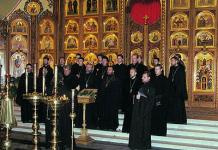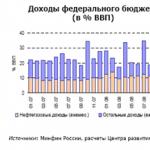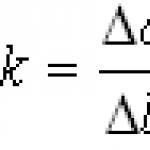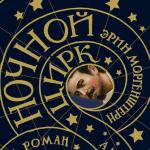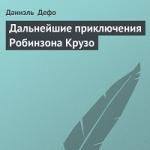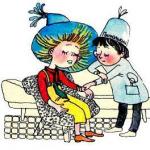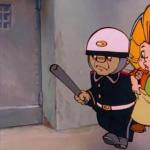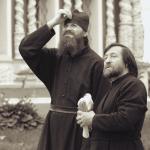As we all know, vocal music is music intended for singing, and the voice in this music takes the main or equal role with other instruments. Vocal music includes works written for one or multiple voices, as well as any musical works for singing with instrumental accompaniment. In all works, excluding vocalise, the voice is closely related to the poetic text, and such works are considered as musical and poetic works. In the past, almost all musical works were associated with everyday life; there were various work songs, play songs, lullabies, ritual songs, dance songs, and round dances.
One of the oldest vocal genres is song. There are folk and original songs. But, as often happens in art, these two elements constantly interact, the authors take into their works chants or melodic lines from folk songs to give them a specific sound. The origins of this genre go back to ancient times, to antiquity, where music and poetry were inseparable from each other. Basically, a song is a repeated repetition of the same tune, which is given different shades by the text changing from verse to verse. Songs are performed both with and without accompaniment. But it must be said that even the simplest accompaniment gives the song expressiveness.
Together with the song, he brought great popularity to vocal genres romance. This is a chamber piece of music for voice and instrument accompaniment. They received intensive development in the 18th-19th centuries. Unlike a song, the melody in a romance is more detailed, connected with the verse, reflecting not only the general character, but also individual poetic images. The musical accompaniment, which is an equal participant in the romance, is very important. Romance is divided into separate genres: ballads, elegies, barcarolles, etc. Romances occupy a very large place in the chamber vocal genre. They come in love, humorous, satirical, and tragic content.
There are works for several voices, such works are called vocal ensembles(duets, trios, quartets, etc.) or choirs(works for a large singing group). Works for choir are divided into two groups - works with instrumental or orchestral accompaniment and without it a capella.
One of the largest vocal genres is opera. It combines theatrical action, vocal music, instrumental music, visual arts, and choreography. In opera you can find all forms of vocal music: here you can find arias, arioso, monologues, songs, recitatives, duets, trios, quartets, choirs.
Unlike opera oratorio, being also a major work for choir singers and symphony orchestra, it is performed without scenery, theatrical costumes or scenery. Usually written on a dramatic or biblical subject. The oratorio occupies an intermediate position between opera and cantata and includes solo arias, recitatives, ensembles and choirs. The action in the oratorio, just like in the opera, develops on a dramatic basis, but here there is more of a story about the action than a show as in the opera. Initially, oratorios were written based on biblical or evangelical texts and were intended to be performed in church on church holidays, but later the oratorio acquired a secular character and moved from the church to the stage.
Also, an expanded work for solo singers, sometimes a choir with an orchestra, is cantata. They can be lyrical, narrative, solemn, composed in honor of an event or date. This is usually a work of small size with homogeneous content, consisting of an introduction (symphony, prelude, overture, etc.), arias, recitatives and choruses. A cantata is similar to an oratorio, but differs in its smaller size and scale of action, lack of dramatic development of the plot and chamber character.
We examined the largest genres of vocal music, which include many more subtypes and varieties, such as serenade, ditties, barcarolle, gandoliera, aria, arietta, arioso, epithalamus, psalm, spiritual, chanson, etc.
). There are also works in which the human voice is used as orchestral color (The Nutcracker by Pyotr Ilyich Tchaikovsky), in which the voice is accompanied by a melody.
Genres of vocal music:
- Operatic,
- Oratorial,
- Chamber,
- Operetta,
- Jazz.
Cantata- a work of a solemn or lyric epic nature. It is characterized by a small size and uniformity of content (one topic is expressed). Opera (from Latin - work, product) is a type of synthetic art. A work of art, the content of which is embodied in stage, musical and poetic images.
Opera combines in a single theatrical action: vocal (solo) ensemble (choir), instrumental music (symphony orchestra), drama, fine arts (scenery, costume) choreography (ballet). The opera embodies all forms of vocal music: (aria, arioso, song, monologue, recitative, duet, trio, quartet, grand finales with choir).
Opera of its time is divided into genres
- Historical-heroic;
- Historical-romantic;
- Heroic-poetic;
- Folk-fairy tale;
- Lyrical;
- Dramatic;
- Comedy;
- Satirical.
Oratorio (from Latin I say, I pray) is a large musical work for singers (soloists) of a choir and symphony orchestra. They usually wrote on dramatic and biblical subjects. Chamber genre - (Latin: Chamber, room.) A very extensive layer of vocal music that arose in the Renaissance and Baroque era. At this time, madrigals, cantatas, and masses are written. Singing requires virtuosity and poshness. Works are written for soloists, a small choir and a small orchestra. Baroque style (whimsical) - characterized by pomp, effects, and the desire to combine reality with illusion. There are sophisticated cadences in the singing next to the cantilena. Madrigal - (Latin song in native language). (verses, choruses) - a short poem, laudatory, flattering, loving, tender, subtle and poignant. In the 16th century it becomes a vocal poem (usually 4 - 5 people) In the 17th century it becomes lyrical poems addressed to a woman. A cantata is a work of a solemn or lyrical-epic nature. It differs from an oratorio in having a smaller orchestra and a less developed plot. The content is secular and spiritual-ecclesiastical. Romances occupy a very large place in the chamber vocal genre. Romance-Spanish (Romanso, sing in Romanesque.) It began to develop intensively in the 18th and 19th centuries, elegies, ballads, and dramatic monologues appeared. A little later, songs of love, humorous, satirical and tragic content appear. The best examples of classical romance are the composers: Schumann, Schubert, Tchaikovsky, Rachmaninov, Rimsky-Korsakov, Dargomyzhsky. Operetta (from Italian - small opera) A musical and stage work of a comedic nature, combining in its dramaturgy: music, dance, conversation, dialogue. The performance involves soloists, a choir, an orchestra and a small amount of ballet. Operetta as an independent genre emerged in France in the mid-19th century. The creators were playwright F. Hervé and composer J. Offenbach. The following composers brought fame to the operetta: Strauss, Lehár, Kalman, Dunaevsky, Langerbelli.
see also
Wikimedia Foundation. 2010.
See what “Vocal music” is in other dictionaries:
Music, in which the main part is singing, and playing instruments is only an addition to it. Dictionary of foreign words included in the Russian language. Pavlenkov F., 1907. VOCAL MUSIC singing with accompaniment on k.n.... ... Dictionary of foreign words of the Russian language
Works for one, several or many voices (with or without instrumental accompaniment), with few exceptions related to the word, poetic text... Big Encyclopedic Dictionary
You turn on the radio and hear a pop song. Turn the tuning knob; now some kind of choral work is playing, and on the next wave, it seems, they are broadcasting an opera... All this is vocal music (from the Latin vocalis, sounding, singing), that is... ... Musical dictionary
Works for one, several or many voices (with or without instrumental accompaniment), with few exceptions related to the word, poetic text. * * * VOCAL MUSIC VOCAL MUSIC, works for one,… … encyclopedic Dictionary
Music intended for singing. V. m. includes works for one, several, or many voices without accompaniment (solo songs, ensembles, a cappella choirs) and any compositions for singing with instrumental accompaniment. In all… … Great Soviet Encyclopedia
Music intended for singing. V. m. are treated as works for one, several or many. unaccompanied voices (solo songs, ensembles, a cappella choirs), and any music. compositions for singing with instruments. accompanied by various... ... Music Encyclopedia
Vocal music- (from Italian voce voice) music intended for singing (solo, ensemble or choir) with or without accompaniment. The most extensive and popular area of muses. claim VA, including adv. song creativity, cult music and ramifications... Russian humanitarian encyclopedic dictionary
VOCAL MUSIC- strictly speaking, music performed by human voices alone, without instrumental accompaniment; nevertheless, in our time the same name also denotes music for singing with the accompaniment of instruments. Human voice… … Riemann's Dictionary of Music
The oldest of all types of music. Any music performed by human voices, without instrumental accompaniment or with accompaniment playing a secondary role, is called vocal. Vocal music includes: vocalises, solfeggio,... ... Encyclopedic Dictionary F.A. Brockhaus and I.A. Ephron
You have found yourself in the music genres section, where we will get acquainted with each musical direction in more detail. We will describe what it is, why it is needed and what features it has. Also at the very end there will be articles in this section that will describe each direction in more detail.
What are music genres
Before discussing what genres of music are, the following should be mentioned. We need a certain coordinate system so that we can put all phenomena into it. The most serious and global level in this coordinate system is the concept of style or art-historical system.
There is a style from the Middle Ages, Renaissance, Baroque or Romanticism. Moreover, in each specific era, this concept covers all arts (literature, music, painting, and so on).
However, music has its own categories within each style. There is a system of genres, musical forms and means of expression.
What is a genre?
Each era gives musicians and listeners a certain set of stage venues. Moreover, each site has its own rules of the game. These sites may disappear over time or remain for some time.
New groups of listeners with new interests are emerging - new stages are emerging, new genres are emerging.
Let's say, in the era of the European Middle Ages, until approximately the end of the 11th century, the only such stage for professional musicians was the church. Time and place of worship.

This is where the genres of church music take shape. And the most important of them (mass and mathet) will go far into the future.
If we take the late Middle Ages, the era of the Crusades, then a new stage appears - a feudal castle, a feudal courtyard of an aristocrat, a court holiday or simply a place of leisure.
And here the genre of secular song arises.
For example, the 17th century literally explodes with fireworks of new musical genres. Here things arise that go far ahead of our time and will still remain after us.
For example, opera, oratorio or cantata. In instrumental music, this is an instrumental concerto. Even such a term as symphony appears. Although maybe it was built a little differently than it is now.
Genres of chamber music emerge. And underneath it all lies the emergence of new stage venues. For example, an opera house, a concert hall or a richly decorated salon of a city aristocratic house.
Before you start, be sure to start exploring different directions. This then translates very well in practice. It will be especially useful when creating something new!
Musical form
The next level is musical form. How many parts are there in the product? How is each part organized, how many sections does it have and how are they connected to each other? This is what we mean by the concept of musical form.
Let's say opera is a genre. But one opera can be in two acts, another in three, and there are operas in five acts.
Or a symphony.
Most familiar European symphonies are constructed in four movements. But let’s say that Berlioz’s symphony Fantastique has 5 movements.
Expressive means
The next level is a system of musical expressive means. Melody in its unity with rhythm.
Rhythm is the deep organizing force of all musical sound. It underlies the existence of music. Because through rhythm, human life is connected with reality, with the cosmos.
Many labor movements are rhythmic. Especially in agriculture. Much is rhythmic in the processing of stone and metals.
The rhythm itself appears, perhaps, before the melody. We can say that rhythm generalizes, and melody individualizes.
The feeling of rhythm, like some kind of magic, arises in the very early stages of civilization. And later, in the era of antiquity, such a feeling is recognized as an idea of the universal connection of phenomena, which is rhythmic.

Rhythm is associated with number. And for the Greeks, number was an extremely important idea of the world order. And this whole idea of rhythm stuck for a very long time.
At the beginning of the 17th century, the German composer Michael Pritorius spoke of the early Italian experiments in opera (there was no ordered rhythm): “This music is without connections and measure. She is an affront to God’s established order!”
The nature of the movement is fast, brisk, moderate and calm. They also set the tone for any superstructure that is made on them. There is also a sense of universal connection here. 4 sides of movement character, 4 cardinal directions, 4 temperaments.
If we go into even more detail, then this is timbre or sound coloring. Or let's say how the melody is pronounced. Distinctly dissected or coherent.
Melody, rhythm and everything else appears as a direct emotional response to reality. And they take shape in those infinitely distant times in the primitive communal system, when a person has not yet realized his own self in comparison with other selves or with nature.
But as soon as class society appears, a distance arises between one’s self and other selves, between self and nature. And then music genres, musical forms, and styles begin to take shape.
Genres of chamber music
Before talking about the genres of chamber music, let's understand the direction. Chamber music is music performed by a small number of performers for a small number of listeners.
Previously, such music was very often performed at home. For example, with family. This is where they came up with the name chamber. From Latin camera means room. That is, small, home or room music.
There is also such a thing as a chamber orchestra. This is a smaller version (usually no more than 10 people) of a regular orchestra. Well, there aren’t many listeners either. Usually these are relatives, acquaintances and friends.
folk song- the simplest and most widespread genre of chamber music. Previously, very often many grandparents sang various folk songs to their children and grandchildren. The same song could be sung with different words. As if adding something of your own.

However, the melody itself generally remained unchanged. Only the text of the folk song changed and improved.
Many people's favorite romances- This is also a genre of chamber music. Usually they performed a small vocal piece. It was usually accompanied by a guitar. That’s why we really love such lyrical songs with a guitar. Many people probably know about them and have already heard them more than once.
Ballad- this is a kind of narrative about various exploits or dramas. Ballads were often performed in taverns. As a rule, they praised the exploits of various heroes. Sometimes ballads were used before an upcoming battle to raise the morale of people.
Of course, in such songs certain moments were often embellished. But in essence, without additional imagination, the very significance of the ballad would decrease.
Requiem- This is a funeral mass. This kind of mourning choral singing is performed in Catholic churches. In our country, the requiem was usually used as a tribute to the memory of folk heroes.
- song without Words. Usually intended for one singer as a training exercise. For example, to develop a vocalist's voice.
Serenade- a genre of chamber music that was performed for a beloved. Usually men performed them under the windows of their beloved women and girls. As a rule, such songs praised the beauty of the fair sex.
Genres of instrumental and vocal music
Below you will find the main genres of instrumental and vocal music. For each direction I will give you short descriptions. Let's touch on the basic definition of each type of music a little more.
Genres of vocal music
There are several genres of vocal music. It is worth saying that the direction itself is the oldest in the history of the development of music. After all, it is the main key for the transition of literature into music. That is, literary words began to be used in musical form.

Of course, these words were given the main role. Due to this, such music began to be called vocal. A little later, instrumental music appeared.
In vocal music, in addition to vocals, various instruments can also be used. However, in this direction their role is relegated to the background.
Here is a list of the main genres of vocal music:
- Oratorio- a very large work for soloists, orchestra or choir. Typically, such works dealt with problems of a religious nature. A little later, secular oratorios appeared.
- Opera- a huge dramatic work that combines the genres of instrumental and vocal music, choreography and painting. A special role here is given to various solo numbers (aria, monologue, and so on).
- Chamber music- it was mentioned above.
Genres of instrumental music
Instrumental music- these are compositions that are performed without the participation of a vocalist. Hence the name instrumental. That is, it is performed only with the help of instruments.

Very often, many artists in their albums use instrumentals as bonus tracks in the album. That is, several of the most popular compositions can be selected and then their versions without vocals can be recorded.
Or they can select all the songs on the album. In this case, the album is released in two versions. This is usually done to increase the value of the product and raise its price.
There is a list for certain genres of instrumental music:
- Dance music- usually simple music for dancing
- Sonata– used as a solo or duet for chamber music
- Symphony- harmonious sound for symphony orchestra
Genres of Russian folk songs
Let's talk about the genres of Russian folk songs. They reflect all the charm of the soul of the Russian people. Typically, such musical works praise the nature of the native land, heroes and ordinary workers. The joys and troubles of the Russian people are also mentioned.

Here is a list of the main genres of Russian folk songs:
- Labor songs- chanted while working to facilitate a person’s work activity. That is, with such songs it was much easier for the workers to work. They set the rhythm of the work. Such musical works reflected the basic life of the working class people. Labor shouts were often used for work.
- Ditties- a very common genre of folk music. As a rule, this is a short quatrain with a repeating melody. Chatushki carried a great meaning of the Russian word. They expressed the basic mood of the people.
- Calendar songs- used on various calendar holidays. For example, on Christmas or New Year's Eve. This musical genre was also well used for fortune telling or during the changing seasons.
- Lullaby- gentle, simple and affectionate songs that mothers sang to their children. As a rule, in such songs mothers introduced their children to the world around them.
- Family songs- used at various family holidays. This genre reflected very well at weddings. It was also used at the birth of a child, when a son was sent to the army, and so on. It is worth saying that such songs were accompanied by a certain ritual. All this together helped protect against dark forces and various troubles.
- Lyrical compositions— in such works the difficult lot of the Russian people is mentioned. For example, the difficult life of women and the difficult life of ordinary peasants is very often mentioned.
Genres of modern music
Now let's talk about the genres of modern music. There are quite a lot of them. However, they all depart from the three main directions in modern music. So we'll talk a little about them.

Rock
Rock is popular today. It may not be the same as before, but in our time it has become firmly entrenched. Therefore, it is impossible not to mention it. And the direction itself gave impetus to the birth of many genres. Here are some of them:
- Folk rock- elements of folk songs are well used
- Pop rock- music for a very wide audience
- Hard rock- heavier music with a harsh sound
Pop
Popular music also covers many genres that are often used in modern music:
- House- electronic music performed on a synthesizer
- Trance- electronic music with a predominance of sad and cosmic melodies
- Disco– dance music with abundant rhythmic drum and bass sections
Rap
In recent years, rap has been gaining momentum quite well. In fact, this direction has practically no vocals. Basically they don’t sing here, but rather read. This is where the phrase rap came from. Here is a list of some genres:
- Rapcore- a mixture of rap and heavy music
- Alternative rap- a mixture of traditional rap with other genres
- Jazz rap- a mixture of rap and jazz
Electronic music genres
Let's look a little at the main genres of electronic music. Of course, we won’t touch on everything here. However, we will analyze some of them. Here is the list:
- House(house) - appeared in the 80s of the last century. It originates from the disco of the 70s. Appeared thanks to the experiments of DJs. Main features: repeating beat rhythm, 4x4 time signature and sampling.
- Deep house(deep house) - lighter, atmospheric music with a deep, dense sound. Includes elements of jazz and ambient. The production uses solo keyboards, electric organ, piano and female vocals (mostly). It has been developing since the late 80s. Vocals in this genre always take a secondary place. The first one contains melodies and sounds to depict the mood.
- Garage house(garage house) - the same as deep house, only vocals take the main role.
- New disco(nu disco) is a more modern musical genre based on the renewed interest in disco music. It's very popular now to go back to your roots. Therefore, this genre is based on the music of the 70s and 80s. The genre itself appeared in the early 2000s. Synthesized sounds similar to the sounds of real instruments are used to create disco of the 70s and 80s.
- Soul full house(soulful house) - the basis is taken from house with a 4x4 rhythmic pattern, as well as vocals (full or in the form of samples). The vocals here are mostly soulful and very beautiful. Plus the use of a variety of musical instruments. Such a rich presence of instruments brings the music of this genre to life very well.
Rap genres
Let's move on to consider the main genres of rap. This direction is also actively developing. Therefore, it would be nice to touch on that too. Here is a small list of genres:
- Comedy Rap- intelligent and funny music for entertainment. Has a combination of real hip-hop and regular humor. Comedy rap emerged in the 80s.
- Dirty rap- dirty rap, characterized by a pronounced heavy bass. Basically this music is intended to excite the audience at various parties.
- gangsta rap- music with a very hard sound. The genre of music appeared in the late 80s. Elements from hardcore rap were taken as the parent basis of this trend.
- Hardcore rap— aggressive music with noisy samples and heavy beats. Appeared in the late 80s.
Genres of classical music
There are works divided into many genres of classical music. They became especially widespread in the 18th century. Here is a partial list of destinations:
- Overture- a short instrumental introduction to a performance, plays or works.
- Sonata- a work for chamber performers, which is used as a solo or duet. Consists of three parts connected to each other.
- Etude- a small instrumental piece designed to hone the technique of performing music.
- Scherzo- the beginning of music with a lively and rapid tempo. Mainly conveys to the listener humorous and unexpected moments in the work.
- Opera, symphony, oratorio- they were mentioned above.
Rock music genres
Now let's look at some genres of rock music other than those already mentioned above. Here is a short list with a description:
- Gothic rock- rock music with a gothic and gloomy direction. Appeared in the early 1980s.
- Grunge- music with a solid guitar sound and dark depressive lyrics. Appeared somewhere in the mid-1980s.
- Folk rock— was formed as a result of mixing rock with folk music. Appeared in the mid-1960s.
- Viking rock- punk rock with elements of folk music. Such works reveal the history of Scandinavia and the Vikings themselves.
- Trashcore- faster hardcore. The works are usually small.
Genres of sacred and secular music
Let's look at some genres of sacred and secular music. To begin with, let's define these two directions. You will find out what it is and what is the difference. After that, we'll go through several genres.

Spiritual music
Spiritual music is intended to heal the soul. Such works are used mainly for services in churches. That's why some people also call it church music. Here is a short list of its genres:
- Liturgy- Easter or Christmas service. Performed by a choir, and can also include additional soloists. As a rule, various scenes of events from the Holy Scriptures were inserted into the liturgical drama. Elements of theatricality were often used.
- Antiphon- repetitive music performed by alternating several choral groups. For example, the same verses can be performed alternately by two faces. There are several types of antiphons. For example, holidays (on holidays), sedate (Sundays), everyday, and so on.
- Rondel- was created to an original melody in the form of a special form with the next introduction of vocals to the same motive.
- Proprium- part of the Mass that varies depending on the church calendar.
- Ordinarium- an unaltered part of the mass.
Secular music
Secular music is recognized to show the national character of different cultures. Mainly the main image and life of a common man was described. This type of music was very common among traveling musicians in the Middle Ages.
A person comes into contact with music from his very birth: in infancy his mother sings lullabies to him, in kindergarten and school - singing songs in choirs and at matinees.
The first bell and graduation, initiation into students and Mendelssohn's waltz.
Music is eternal, it inspires a person with joy and helps to survive moments when it is difficult.
In the modern world there are various musical genres:
- Classical.
- Retro.
- Chanson.
- Metal.
- Jazz.
- Acapello et al.
They all have their fans and connoisseurs, worthy of respect and a place on Olympus, where Muse and Harmony reign.
Some people, preferring symphonic or sacred music, do not want to listen to anything about modern instrumental or electronic music, considering these types of art to be a kind of parody.
This article describes what genres of music there are and introduces unknown works.
Each era has its own genre of music, some of them disappear without a trace, others pass through the centuries, gaining immortality.
The definition of a musical genre includes a set of certain properties and behaviors in the art world inherent in a work and the conditions influencing its creation.
The instrumental genre includes works performed exclusively by instruments, without the intervention of the voice.
The table provides a list with examples of the main classical types of musical works belonging to the instrumental genre:
Only a small list of the main directions of classical music is indicated, with extensions for each category.
The most popular genre of modern electronic music
At the end of the eighties of the last century, a new musical direction was formed that has firmly entered modern culture - electronic music.

Below are the main and most popular areas:
- House - formed by changing the sound of disco. A distinctive feature is the frequent repetition of the beat rhythm with alternating sampling.
- Soul Full House - identical to the previous one, but with the inclusion of vocals.
- Deep house is light dance music that combines elements of ambient and jazz. Performed on keyboards with a slight addition of female vocals.
- Garage house is identical to the previous one, but the vocals are put in first place.
- New disco - performed with a synthesizer in a rhythmic style.
Note! More than twenty different branches of the main directions of music are known; different age categories have their own preferred current.
What are the vocal genres?
The most extensive direction in music is the vocal genre.
Its diversity includes:
- Chamber music – performed by a small number of vocalists for a select audience. Translated from Latin - singing in a room.
There are varieties of this direction:
- Folk songs are songs composed by the people and passed on from generation to generation. The words change over time, but the music remains the same.
They are divided into labor ones, performed at work, holiday ones - for religious or secular holidays, weddings, farewells to the army, etc., ditties, lullabies, lyrical ones.
- Romances are lyrical songs performed with a guitar.
- Requiem - funeral singing in Temples.
- Ballads are songs of praise that tell of great victories.
- Serenades are declarations of love performed by men to their lovers.
- Kant - polyphonic singing, sounding overflowing.
- Vocalization is an exercise for training the vocal cords.

- Rock is a broad genre that includes metal, punk rock, pop rock, rock and roll, jazz fusion, gothic rock, hard rock, etc.
- Pop – popular music: house, disco, trance, etc.
- Rap is hard to classify as vocal, since it is read, but this direction is considered vocal.
- Jazz and blues music.
- Liturgies are narrations of the main points of Holy Scripture, performed by the choir.
- Antiphons are repeated chants alternating between two leading groups.
- Rondel, proprium, ordinarium are parts of the mass that are different in sound and purpose.
- Gilyards are fast rhythmic songs.
- Ballads are the stories of the winners.
- Villancico - Italian poetic ballads.
- Opera is a stage musical work that includes vocal singing, stage performances and musical accompaniment.
- Operetta is a comic opera, diluted with dance scenes and conversations.
- An aria is a completed episodic excerpt from an opera or operetta.
- Vaudeville is a fun musical play.
- An interlude is a piece of music performed to fill a pause.
- A cantata is a solemn piece of music.
- A musical is a performance that includes elements of operetta, opera, pop singing and stage dance.
- A choir is a musical ensemble consisting of a large number of performers, often accompanied by an orchestra.
Modern technologies provide the opportunity to listen to music and learn about new, previously unfamiliar destinations without leaving home.
It is enough to enter the name of the group, direction or work into the Internet search engine Yandex or Google and select what you want. Learn new music, and life will sparkle with bright colors.
Useful video
Send your good work in the knowledge base is simple. Use the form below
Students, graduate students, young scientists who use the knowledge base in their studies and work will be very grateful to you.
Posted on http://www.allbest.ru/
Vocal music
vocal music song romance
Vocal music is music in which the voice dominates, or has equal rights with the instruments, with accompaniment or a cappella. Large genres - musical-dramatic work, oratorio, medium genres - cantata, vocal cycle, liturgy, choral concert, small - vocal miniature (song, romance). There are also works in which the human voice is used as orchestral color (The Nutcracker by Pyotr Ilyich Tchaikovsky), in which the voice is accompanied by a melody.
Genres of vocal music:
· Opera,
· Oratorial,
· Chamber,
· Operetta,
A cantata is a work of solemn or lyroepic style. It is characterized by a small size and uniformity of content (one topic is expressed). Opera (from Latin - work, product) is a type of synthetic art. A work of art, the content of which is embodied in stage, musical and poetic images.
Opera combines in a single theatrical performance: vocal (solo) ensemble (choir), instrumental music (symphony orchestra), drama, visual arts (scenery, costume) and choreography (ballet). The opera embodies all forms of vocal music: (aria, arioso, song, monologue, recitative, duet, trio, quartet, grand finales with choir).
Opera of its time is divided into genres
· Historical-heroic;
· Historical-romantic;
· Heroic-poetic;
· Folk-fairy tale;
· Lyrical;
· Dramatic;
· Comedy;
· Satirical.
An oratorio is a large musical work for choir singers and symphony orchestra. The chamber genre is a very extensive layer of vocal music that arose in the Renaissance and Baroque eras. At this time, madrigals, cantatas, and masses are written. Baroque style is characterized by pomp, effects, and the desire to combine reality with illusion. There are sophisticated cadences in the singing next to the cantilena. Madrigal is a short poem, laudatory, flattering, loving, tender, subtle and poignant. A cantata is a work of a solemn or lyrical-epic nature. It differs from an oratorio in having a smaller orchestra and a less developed plot. The content is secular and spiritual-ecclesiastical. Romances occupy a very large place in the chamber vocal genre. Romance-Spanish It began to develop intensively in the 18th–19th centuries, elegies, ballads, and dramatic monologues appeared. A little later, songs of love, humorous, satirical and tragic content appear. The best examples of classical romance are the composers: Schumann, Schubert, Tchaikovsky, Rachmaninov, Rimsky-Korsakov, Dargomyzhsky. Operetta is a musical and stage work of a comedic nature, combining in its dramaturgy: music, dance, conversation, and dialogue. The performance involves soloists, a choir, an orchestra and a small amount of ballet. Operetta as an independent genre emerged in France in the mid-19th century. The creators were playwright F. Hervé and composer J. Offenbach. The following composers brought fame to the operetta: Strauss, Lehár, Kalman, Dunaevsky, Langerbelli.
Vocal music- it is a synthesis (interrelation) of music and literature. Vocal music is performed with the voice. This is the most ancient form of art.
Genres of vocal music:(basic)
Song
Romance
Cantata
Oratorio
Opera.
SONG is the source, the pinnacle of music. Song - an inextricable connection of words, sound, rhythm, intonation. The song without words is called - vocalizationVocalise - from Latin (vocalis) - sounding, singing.
ROMANCE is a musical and poetic work for voice with accompaniment ( piano or guitar, harp), in which Both the text and the accompaniment are of great importance. Accompaniment helps to reveal the content more fully. IN The romance reveals very subtle and deeply personal experiences. Romance- from the Spanish word (romance) - Romanesque. In medieval Spain, the word meant a secular song in the Roman language, that is, Spanish, in contrast to church songs, which were sung in Latin.
CANTATA - from the Italian word (cantare) - to sing. A cantata is a fairly large, most often multi-part work intended for a choir, solo singers and a symphony orchestra. The cantata was born at the end of the 16th century in Italy. It conveys thoughts and feelings that are very significant for all people.
ORATORY - from Latin word (oratoria) - eloquence. An oratorio is a large multi-movement musical work for solo singers, choir and symphony orchestra. The oratorio genre originated at the end of the 16th century in Rome. An oratorio is a musical performance in which a story unfolds on a religious theme.
In the 18th century, an oratorio with non-religious but secular content appeared.
OPERA - from the Italian word (opera) - composition, work. Opera is a dramatic piece of music in which all the characters sing. Opera has solo numbers: aria, arietta, arioso.
Aria -(from Italian - song, breathing, control breathing.) - solo musical number.
Arietta - small aria.
Arioso - just like an aria is a solo musical number in an opera.
The opera ensemble (meaning together), opera recitative plays a great role in opera.
(the characters speak in an operatic chant), chorus.
Librettist- one who composes the text of an opera in verse or prose. Libretto - from the Italian word (libretto) - little book. Libretto- a play intended to be staged. Libretto - This is the full text of a musical and stage composition, the primary source of which is a literary or dramatic work, a historical event, or a folk legend.
Composers also began to compose songs and perform them in concerts. This is how the song becomes a work of the chamber genre.
What is chamber? Many centuries ago there was music performed in squares. These were choruses in pompous Greek tragedies, military marches calling to battle. This music was distinguished by its mass appeal. It was performed by a large number of musicians and there was a large audience. It required large spaces: squares, huge halls.
In contrast to the mass music of squares and huge rooms, room music emerged, when listeners gathered in a small room and one or two performers delighted their ears. This music, performed by one or two performers or small ensembles of musicians, could only be heard in small rooms (there were no radio amplifiers then) and had the character of an intimate narrative.
This kind of music came to be called chamber music from the Italian word camera, which means room. Along with the concept of “chamber song,” “romance” began to spread widely at the end of the 18th and 19th centuries.
Posted on Allbest.ru
Similar documents
Biography of the composer. Song and romance, vocal music. Traditions of vocal and vocal-symphonic music. Works for musical theater. World fame of Sviridov. Music for films, operettas. Nationwide love.
report, added 10/27/2006
The origins of vocal music. Creating new level music. The essence of the introduction to the opera. Mixing European teachings about music with African rhythms. The main directions of jazz. Use of electronic tools. Difficulties in determining the style of music.
abstract, added 04/08/2014
Art that reflects reality in sound artistic images. The relationship between music and age. Determining the relationship between character and music. Main genres of music. The versatility of music and its importance in modern human life.
presentation, added 03/16/2017
Vocal, instrumental and vocal-instrumental music. The main genres and musical directions of vocal and instrumental music. Popularity of instrumental music during the Renaissance. The emergence of the first virtuoso performers.
presentation, added 04/29/2014
The concept and history of the origin of music, the stages of its development. Genres and styles of music. "Linguistic" theory of the origin of music. The formation of the Russian composer school. Relations between musicians and the state during the Soviet period. Development of music in Russia.
abstract, added 09/21/2010
The concept of classical music. The emergence of jazz as a combination of several musical cultures and national traditions. The main centers of the emergence and development of rock music. Author's song or bard music. Electronic dance music style.
presentation, added 12/17/2013
Information about the authors of words and music. Analysis of the work "Lily of the Valley" for three-voice female choir with accompaniment. Ranges of choral parts. The form is verse with a peculiar chorus, the texture is homophonic-harmonic, elements of Chinese folk music.
report, added 11/13/2014
Formation of music as an art form. Historical stages of the formation of music. The history of the formation of music in theatrical performances. The concept of "musical genre". Dramatic functions of music and the main types of musical characteristics.
abstract, added 05/23/2015
The significance of the eighteenth century as a transitional period in the history of Russian music. Orchestras of Peter's times. The composition of the orchestra and the predominance of local wind instruments. The emergence of instrumental music. Folk song as palace entertainment.
abstract, added 01/14/2010
Features of vocal forms and their main types. The subordination of the verbal text to the musical one, and the subordination of music to the verbal text and their equality. Sonata form as the highest achievement of musical art. Tonal-harmonic structure of the main part, its forms.



